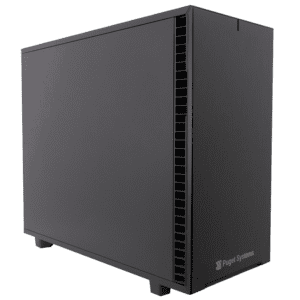In this post I go through how to use Docker to create a container with all of the libraries and tools needed to compile TensorFlow 1.7. The build will include links to Intel MKL-ML (Intel’s math kernel library plus extensions for Machine Learning) and optimizations for AVX512.
GTC 2018 Impressions
NVIDIA’s Graphics Technology Conference (GTC) is probably my all-time favorite conference. It’s an interesting blend of “Scientific Research meeting” and Trade-Show. It’s put on by a hardware vendor but still feels like a scientific meeting. It’s not just a “Kool-Aid” fest! In this post I go present some of my thoughts about this years conference.
TensorFlow Installation CPU version
TensorFlow is a very powerful numerical computing framework. However, like any large research level program it can be challenging to install and configure. In this post I’ll try to give some guidance on relatively easy ways to get started with TensorFlow. I’ll only look at relatively simple “CPU only” Installs with “standard” Python and Anaconda Python in this post. (I also have a quick test with Intel Python.)
TensorFlow Introduction What is TensorFlow
TensorFlow is on it’s way to becoming the “standard” framework for machine learning. There are many reasons for that, and, it is not just for machine learning! In this post I’ll give a descriptive introduction to TensorFlow. This is the first post in a series on how to work with TensorFlow. Hopefully after reading thsi you will have a better understanding of the What? and Why? of TensorFlow.
NAMD Performance on Xeon-Scalable 8180 and 8 GTX 1080Ti GPUs
This post will look at the molecular dynamics program, NAMD. NAMD has good GPU acceleration but is heavily dependent on CPU performance as well. It achieves best performance when there is a proper balance between CPU and GPU. The system under test has 2 Xeon 8180 28-core CPU’s. That’s the current top of the line Intel processor. We’ll see how many GPU’s we can add to those Xeon 8180 CPU’s to get optimal CPU/GPU compute balance with NAMD.
TensorFlow Scaling on 8 1080Ti GPUs – Billion Words Benchmark with LSTM on a Docker Workstation Configuration
In this post I present some Multi-GPU scaling tests running TensorFlow on a very nice system with 8 1080Ti GPU’s. I use the Docker Workstation setup that I have recently written about. The job I ran for this testing was the “Billion Words Benchmark” using an LSTM model. Results were very good and better than expected.
How-To Setup NVIDIA Docker and NGC Registry on your Workstation – Part 5 Docker Performance and Resource Tuning
This should be the last post in this series dealing with the Docker setup for accessing the NVIDIA NCG Docker registry on your workstation. There are a couple of configuration tuning changes that you may want to make. These will improve performance and ensure that you have proper system “user limit” resources to handle large application and job runs with docker.
How-To Setup NVIDIA Docker and NGC Registry on your Workstation – Part 4 Accessing the NGC Registry
This post will go through how to get access to the NVIDIA NGC container registry on your workstation. The first 3 posts in this series gave instructions on how to install and configure a base Ubuntu 16.04 workstation system with Docker and NVIDIA-Docker for a usable work-flow. With that taken care of we can get setup to use the many useful docker images in the NGC container registry for your local system.
How-To Setup NVIDIA Docker and NGC Registry on your Workstation – Part 3 Setup User-Namespaces
In this post I’ll go through setting up Docker to use User-Namespaces. This is a very important step to achieving a comfortable docker work-flow on a personal Workstation. I will show you how to configure Docker so that instead of files and processes being owned by root they will be owned by your personal user account. This will make using Docker containers on your system safer and feel much the same as a “normally” installed application.
How-To Setup NVIDIA Docker and NGC Registry on your Workstation – Part 2 Docker and NVIDIA-Docker-v2
This post will build on top of the base systems setup described in Part1. We will go through installing,configuring and testing Docker and NVIDIA-Docker version 2.
